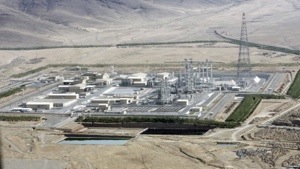The following analysis was published November 5, 2013 by The Institute for Science and International Security (ISIS), few days before the P5+1 and Iran have reached an understanding on implementing wider inspections over the Iranian nuclear program.
Iran and the P5+1 are set to resume talks on Iran’s nuclear program on Thursday, November 7 in Geneva. ISIS has developed a list of irreducible elements that should be goal achievements of a negotiated interim agreement. These irreducible elements would satisfy the following immediate goals:
– Stopping the advance of Iran’s centrifuge and Arak reactor programs; Extending breakout times;
– Capping the Iranian centrifuge program and ensuring that it will not expand beyond this cap (in terms of enrichment output) during the next 5-15 years; and
– Increasing the chance of finding a secret centrifuge or plutonium separation plant.
Other, vital questions not addressed here: How to establish adequate transparency in general, including Iran addressing the IAEA’s concerns about Iran’s past and possibly on-going nuclear weapons efforts? How to trade Iranian concessions for sanctions relief? In the longer term, what incentives package is appropriate and how to increase Iran’s supply of medical isotopes and nuclear electricity?
The “Freeze Plus” interim agreement should seek the following elements:
Freezing the Iranian centrifuge program and extending breakout times:
– Stopping production of near 20 percent LEU; mothballing or disabling the six cascades involved in making near 20 percent LEU at Natanz and Fordow;
– Reducing stocks of near 20 percent LEU, focusing initially on a time table to eliminate all stocks in hexafluoride form through shipping out of country, blending down, or converting into oxide form. (A longer-term agreement would need to eliminate all stocks of near 20 percent LEU, other those that are irradiated or about to be loaded into a reactor);
– Achieving the principle that Iran’s centrifuge program would be capped to below a certain size, taken initially as about 9,000 enriching IR-1 centrifuges in only three modules at the Natanz Fuel Enrichment Plant, a slight decrease from the current level of enriching centrifuges.
Other modules at Natanz and those at Fordow would be disabled, so as to increase the time needed for restart;
– Halting the installation of any more centrifuges. The issue of whether the IR-2m centrifuges, or other advanced centrifuges, would enrich uranium would be addressed later, although in a way that is consistent in terms of maintaining the cap in enrichment output in the third sub-bullet;
– Spares for broken IR-1 centrifuges could come from the large inventory of IR-1 centrifuges installed at Natanz and Fordow but not yet enriching (about 8,000 as of August 2013). As a result, Iran would have no need to manufacture more IR-1 centrifuges for years, allowing for the freezing of centrifuge manufacturing immediately; and
– Establishing remote camera monitoring of all centrifuge plants.
Alternatively, inspectors could visit the enrichment sites daily, or near daily, although this step would require substantial IAEA inspector resources, which could be better applied to other tasks in Iran. Preliminary steps aimed at helping ensure Iran is not building another centrifuge plant and increasing the chance of detecting a secret centrifuge plant:
– Implementation of early notification of construction of new facilities (code 3.1 of comprehensive safeguards agreement);
– Developing a baseline of information about Iran’s gas centrifuge program, including a detailed declaration of any centrifuge plants under construction or planned for construction; a declaration of its centrifuge research, development, assembly and manufacturing complex; and a declaration of Iran’s total inventory of centrifuges; and
– Other verification measures, such as the Additional Protocol and the monitoring of uranium mines and mills and of the centrifuge complex, would be implemented later.
Halting further construction of the Arak reactor, including the manufacture of its fuel. Ensuring that Iran agrees that future sanctions relief requires that Iran address fully and cooperatively the IAEA’s concerns about Iran’s alleged past and possibly on-going work on nuclear weapons.
In essence, these conditions amount to a freeze plus a few reductions in the scale of the centrifuge program, a few modest declarations, and a few additional transparency and disablement steps. A longer term agreement would need to include far more detailed conditions on the scope and timing of Iran’s nuclear program, far more intrusive inspection arrangements, and much more detailed declarations about Iran’s nuclear programs. Read ISIS’s full Power Point presentation on this subject here.

















